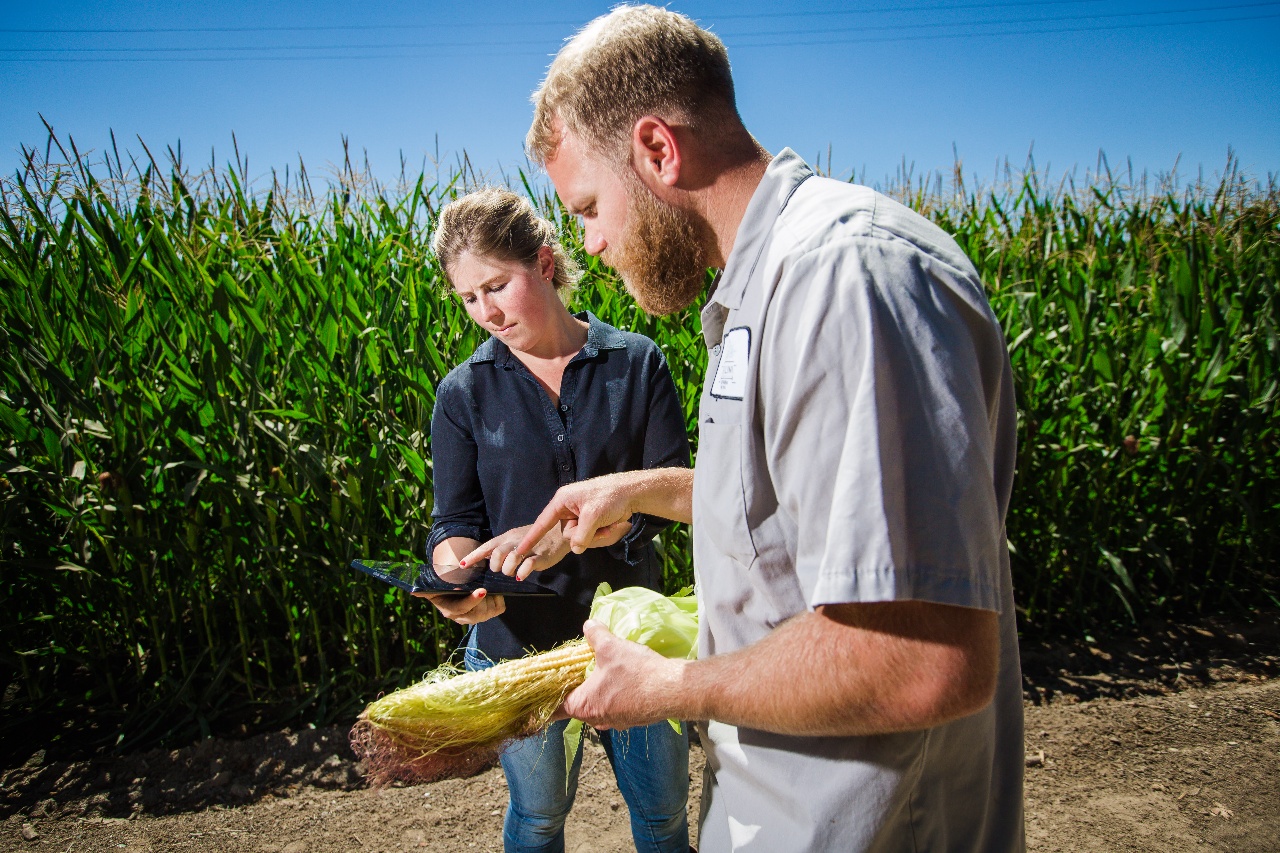With Earth Day coming up, we’re excited to celebrate one of our customers who is leading the way in sustainable farm management: Brian Fiscalini, CEO of Fiscalini Cheese Company. We had the pleasure of talking to Brian about his story and we chatted about farm technology, saving money on input costs, and whether using the word “Earth Day” at farm events was going to get me laughed out of the room - it’s not, he assures me...

Thank you so much for speaking with us today. Can you share what crops you grow?
We grow corn and wheat to support our family dairy operation. We grow about 70% of the overall feed that our cows consume.
How did you get into farming?
Our dairy farm has been in the family for over 100 years. My great grandfather started dairy farming in 1914 on the same piece of land that I farm today. The farm passed to my grandfather, and when it came time for my father to take over, that’s when we incorporated our cheese business. I took over the company about 5 years ago.
Did you always think you would take over the family business?
It was always an option. But, I took a different route. I went back to graduate school after getting my bachelors. And I almost became an accountant. My father was getting a bit older and was ready to retire. We had a conversation where it was either that I come back to the business, otherwise he would probably sell it off. So, I came back to the farm and here we are today.
Wow. I have to imagine cheese is more exciting than financial statements, good choice. How has your thinking about farm management changed over the years?
It’s evolved. There are so many technologies today that weren’t available in my dad’s lifetime, or in my grandfather’s lifetime. There’s also certain chemicals and varieties of genetics that are no longer being used. You have to evolve, you have to use whatever tools you have in your toolbox every day in order to maximize yields or increase your quality - whatever it is you’re looking to do.
How do you think about sustainability as it relates to agriculture?
No matter which way you look at it, agriculture is a very sustainable business model. We continue to plant, harvest and produce food on the same land, every year. I don’t know that many other industries that can operate year after year, and do it with fewer and fewer resources.
Is sustainability a word that producers use to describe their farming practices?
Oh yeah, I think that’s probably one of the first words out of farmer’s mouths when you ask them to describe their operations to you. Whether they are economically sustainable, environmentally sustainable, or generationally sustainable, that’s something that farmers are very aware and proud of.
What technologies have helped increase sustainability on your farm?
The data and the records we have available have helped tremendously, whether it be weather patterns or performance differences between seed varieties. The technology we are using that Ceres Imaging provides is huge too. You can now analyze a 500-acre field down to the square foot. In the past you may have looked out and maybe know that there were some weak spots and not really be sure why. Now you can pinpoint those areas and learn how to make the field or the crop be as consistent as possible throughout the entire field.
We also have a methane digester and produce renewable energy for the waste from our cows!
How has Ceres Imaging accomplished your sustainability goals?
We’ve been using the technology for 3 years. In the first year we made some very impressive improvements by looking at irrigation uniformity, and we found that there were a few areas in our fields that were either receiving too much water and not enough water. We also looked at the fertility of our crop through their Chlorophyll Index and were able to use this information to guide our nutrient plans. In the past our PCA would take one soil sample out of a large field and recommend a fertilizer rate per acre. Which is more of a shotgun approach. With Ceres Imaging we take a more targeted approach and apply fertilizer and nutrients lighter in some areas and more heavily in others.
Can you quantify this impact?
We are seeing, small and dependable increases in yield year over year. At the same time we have reduced the amount of fertilizer we use, thanks to Ceres Imaging. Also, Ceres Imaging has really helped with increasing our water efficiency over time.
What technologies are you most excited about for future years?
I think technology will continue to evolve. In the future what gets me excited is some of the work I’m seeing done around the nutragenomics and how to turn on certain plant genes at the time that you want to. I think Ceres will really help with that, because you will be able to see what a field looks like from above and do test plots and some really cool things to continue to increase yields and reduce resources.
